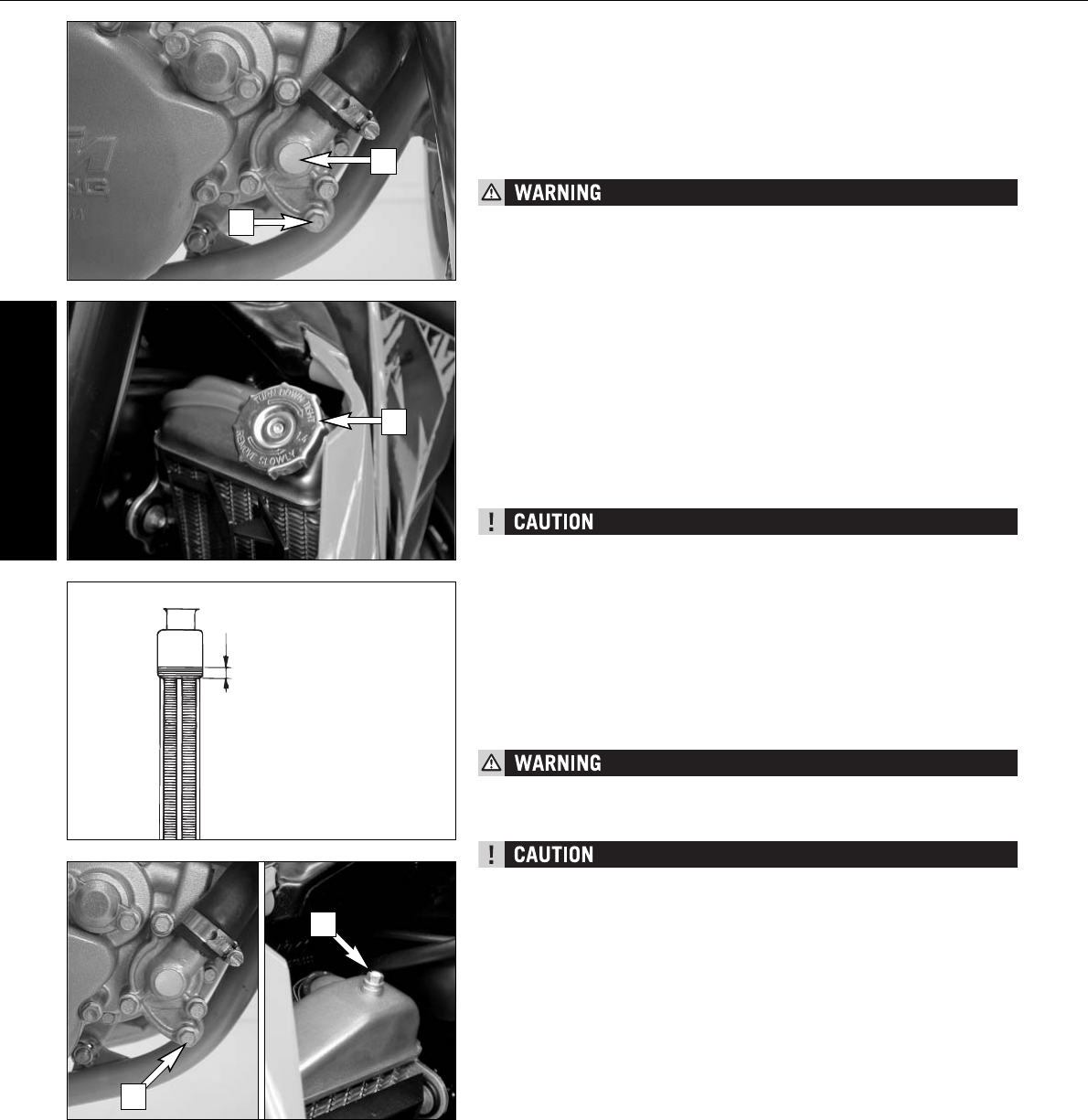
ENGLISH
28
MAINTENANCE WORK ON CHASSIS AND ENGINE »
Cooling system
The water pump [1] in the engine keeps the cooling liquid in circulation.
The cooling liquid is cooled by the air stream. Therefore, the cooling effect
is reduced when the traveling speed is reduced. Dirty radiators additionally
reduce the cooling effect.
The cooling liquid can be drained by removing the screw [2] on the water-
pump cover.
– If possible, always check level of cooling liquid when the engine is cold. If
you have to open the radiator cap [3] when the engine is hot, use a rag to
cover the cap and open slowly to release pressure. Caution - scalding hazard.
– Do not detach any radiator hoses while the engine is hot. The escaping
hot coolant and the steam may cause serious burns.
– In case you get burnt, hold the affected part of your body under running
cold water right away.
– Coolant is toxic. Keep the coolant out of the reach of children.
– In case coolant is ingested, consult a doctor immediately.
– If coolant gets into your eyes, rinse them out with water immediately and
consult doctor.
A mixture of 50% antifreeze liquid and 50% water is used as coolant.
However, the antifreeze protection must be at least -25° C (-13° F). This mix-
ture offers antifreeze protection but also good corrosion protection and should
therefore not be replaced by pure water.
For the cooling system, use only with high-grade antifreeze (Motorex Anti-Freeze).
Using lower-grade antifreeze agents can cause corrosion and coolant foaming.
Pressure induced by heating of the coolant in the system is controlled by a
valve in the radiator cap [3]; a water temperature rising up to 120° C
(248° F) is admissible, without fear of problems.
Checking coolant level
The coolant should be 10 mm (0.4 in) above the radiator fins when the engine
is cold (see illustr.). In the event of the coolant being drained, always fill and
bleed the system.
If possible, always check the level of cooling liquid when the engine is cold.
If you have to open the radiator cap when the engine is hot, use a rag to cover
the cap and open slowly to release pressure.
The cooling system must be bled after draining the cooling liquid or after adding
more than 0.25 l (0.06 US gallons) cooling liquid.
Refilling/Bleeding the cooling system
The cooling system must be bled as described below after draining the
cooling liquid or after adding more than 0.25 l (0.06 US gallons) cooling
liquid.
Make sure that the drain screw [4] is fastened.
Pour approx. 0.5 litres (0.13 US gallons) coolant into the system.
Remove the screw [5] on the right radiator.
Now add cooling liquid until it emerges free of bubbles at the right radiator.
Then immediately mount the screw so that no more air can enter the right
radiator.
Top up the left radiator until the coolant can be seen approx. 10 mm
(0.4 in) above the radiator fins.
Check the coolant level again after a short ride.
1
2
when engine is cold
10 mm
3
5
4


















